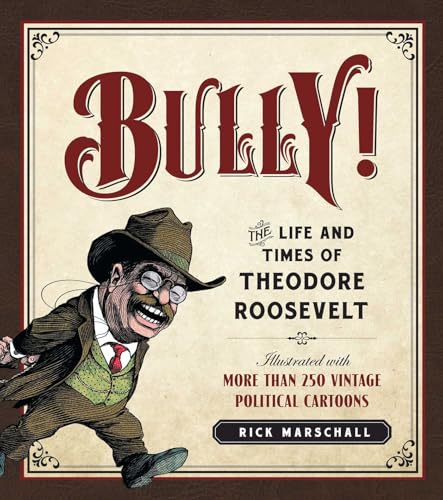As an Amazon Associate, we earn from qualifying purchases. Some links may be affiliate links at no extra cost to you. Although our opinions are based on curated research, we haven't used these products. Articles generated with AI.

10 Best Political Cartoons That Perfectly Capture the Current Climate
To navigate today’s intricate climate, you might want to explore the “Doonesbury in the Time of Trump” collection for satirical takes on modern issues. “President Chaos” captures pivotal moments from Trump’s presidency, while “Bully!” highlights cartoonized history about Theodore Roosevelt. The “Cartoon History of the United States” simplifies complex historical themes, ideal for students. Collections like “The New Yorker Encyclopedia of Cartoons” feature diverse humor, ensuring various perspectives. There’s much more to learn about these impactful works.
Key Takeaways
- Political cartoons like those in “Doonesbury in the Time of Trump” provide humorous reflections on the current political climate and societal issues.
- “President Chaos: Cartoons from Trump’s Four Years” captures significant events and sentiments, making it relevant for understanding today’s political landscape.
- Collections that include diverse artists enhance representation and offer varied perspectives on contemporary political issues.
- The use of humor in political cartoons simplifies complex topics, engaging audiences and encouraging critical reflection on current events.
- Political cartoons serve as historical commentary, allowing viewers to connect with past and present societal challenges through visual satire.
#SAD!: Doonesbury in the Time of Trump
#SAD!: Doonesbury in the Time of Trump
- Amazon Kindle Edition
- Trudeau, G. B. (Author)
- English (Publication Language)
- Satirical Commentary: Trudeau’s wit addresses broader societal issues while critiquing Trump directly.
- Emotional Relief: Readers find humor a necessary escape from overwhelming political negativity.
- Accessibility: Available in various formats, including a Kindle edition for easy access.
Join fans who celebrate Trudeau’s relatable humor and keen observations during challenging times.
Best For: Those looking for a humorous and insightful reflection on the Trump presidency through political satire.
Pros:
- Engaging Humor: Trudeau’s wit offers a light-hearted take on serious political issues, making it enjoyable to read.
- Relatable Content: The strips resonate with readers who share a critical view of the Trump administration and seek validation of their sentiments.
- Multiple Formats: The availability of the book in various formats, including Kindle, allows for convenient access and reading.
Cons:
- Niche Appeal: The humor may not resonate with all readers, particularly those who support Trump or have differing political views.
- Limited Scope: While the strips address broader societal issues, the focus on Trump may feel repetitive to some readers.
- Black and White Edition: The Kindle version is in black and white, which might detract from the visual impact of the original comic strips.
President Chaos: Cartoons from Trump’s Four Years
Sale
President Chaos: Cartoons from Trump's four years of lies, insults and madness
- 112 Pages - 08/01/2024 (Publication Date) - Loose Line Productions Inc (Publisher)
- Artistic Quality: Codor’s cartoons are beautifully drawn, balancing humor with brutal accuracy.
- Historical Context: The book highlights key incidents, like Supreme Court appointments and Trump’s COVID-19 claims.
- Memorable Events: Cartoons illustrate Trump’s Puerto Rico visit and inauguration crowd size disputes.
This collection serves as a reminder of the chaotic reality and is a must-read for anyone.
Best For: Those looking for a humorous yet insightful reflection on the Trump presidency through political cartoons.
Pros:
- Artistic quality: The cartoons are beautifully drawn, providing an engaging visual experience.
- Historical record: The book offers a comprehensive overview of significant events during Trump’s presidency, aiding in understanding the era.
- Humor and satire: The witty depictions of serious political issues make it an entertaining read while encouraging reflection on the absurdities of the time.
Cons:
- Partisan perspective: The content may appeal primarily to those critical of Trump, potentially alienating supporters.
- Limited audience: Readers not interested in political cartoons or current events may find the book less engaging.
- Niche appeal: While it serves as a historical reference, it may not be deemed essential for those who prefer traditional history books or analyses.
Bully!: The Life and Times of Theodore Roosevelt
Bully!: The Life and Times of Theodore Roosevelt: Illustrated with More Than 250 Vintage Political...
- Marschall, Rick (Author)
- English (Publication Language)
- 400 Pages - 10/06/2014 (Publication Date) - Regnery History (Publisher)
If you’re a history enthusiast or simply curious about one of America’s most dynamic presidents, “Bully!: The Life and Times of Theodore Roosevelt” is an excellent choice. Authored by Rick Marschall, this book features over 250 vintage political cartoons, blending history and art seamlessly.
Key Features:
- Balanced Structure: It combines engaging narratives with visual elements, enhancing your understanding of Roosevelt’s influence.
- Diverse Illustrations: From iconic to obscure, the cartoons tell stories that words alone cannot convey.
- Reader-Friendly: Enjoyable and accessible, it’s perfect for both casual browsing and serious study.
While it may not match Pulitzer Prize-winning depth, this collection remains a valuable addition to any Roosevelt enthusiast’s library.
Best For: History enthusiasts and casual readers interested in the life and impact of Theodore Roosevelt through a unique blend of narratives and vintage political cartoons.
Pros:
- Engaging Visuals: The inclusion of over 250 political cartoons enhances the storytelling and provides a vivid representation of Roosevelt’s era.
- User-Friendly Format: The book’s balanced structure makes it enjoyable for both casual browsing and in-depth study.
- Diverse Content: It offers a mix of well-known and lesser-known facts about Roosevelt, enriching the reader’s understanding of his life and presidency.
Cons:
- Limited Depth: Some readers may find the research not as comprehensive as that found in Pulitzer Prize-winning biographies.
- Niche Appeal: The focus on political cartoons may not appeal to all readers, particularly those preferring traditional biographies.
- Potential for Overlooked Context: The emphasis on visuals might leave out some historical context that could enrich the narrative.
Cartoon History of the United States (Cartoon Guide Series)
Sale
Cartoon History of the United States (Cartoon Guide Series)
- Gonick, Larry (Author)
- English (Publication Language)
- 400 Pages - 08/14/1991 (Publication Date) - William Morrow Paperbacks (Publisher)
- Humorous Approach: It simplifies complex historical concepts through humor and engaging illustrations.
- Target Audience: Ideal for middle and high school students, especially those who typically dislike history.
- Broad Appeal: Readers from diverse backgrounds appreciate its accuracy and relatable style.
Despite some criticisms over the artwork’s polish and delivery condition, it remains a powerful educational tool.
Best For: Middle and high school students, especially those who struggle with traditional history lessons and appreciate a humorous approach to learning.
Pros:
- Engaging illustrations and humor make complex historical concepts more accessible.
- Effective teaching tool that helps improve information retention among students.
- Broad appeal across diverse backgrounds, enhancing its relatability and accuracy.
Cons:
- Artwork may appear less polished compared to other works by the same author.
- Some copies may arrive in poor condition, affecting reader satisfaction.
- Illustrations described as sparse and slapdash could detract from the overall reading experience.
The New Yorker Encyclopedia of Cartoons: A Semi-serious A-to-Z Archive
Sale
The New Yorker Encyclopedia of Cartoons: A Semi-serious A-to-Z Archive
- Hardcover Book
- English (Publication Language)
- 1536 Pages - 10/02/2018 (Publication Date) - Black Dog & Leventhal (Publisher)
Quality and Presentation:
- Excellent paper quality enhances flipping through its heavy pages.
- Gorgeous appearance makes it a visually appealing display piece.
Purchase Experience:
- Buyers report excellent service, with prompt resolution of shipping issues.
- Most arrive in mint condition, well-packaged.
Concerns:
- Some formatting issues exist; captions sometimes misalign with images.
- Kindle version lacks clarity, making it less user-friendly.
Best For: The New Yorker Encyclopedia of Cartoons is best for cartoon enthusiasts and collectors who appreciate high-quality, visually appealing compilations of diverse humor.
Pros:
- Excellent paper quality enhances the reading experience with heavy, durable pages.
- Gorgeous appearance makes the books an attractive display piece for any room.
- Positive customer service noted for prompt resolution of shipping issues and satisfaction with product condition.
Cons:
- Formatting issues lead to misalignment of captions and images, affecting readability.
- Kindle version lacks clarity and user-friendliness, making it difficult to enjoy on mobile devices.
- Redundancy in some cartoons may detract from the overall novelty and freshness of the content.
The Art of Ill Will: The Story of American Political Cartoons
Sale
The Art of Ill Will: The Story of American Political Cartoons
- Used Book in Good Condition
- Hardcover Book
- Dewey, Donald (Author)
- Beautiful Presentation: Perfect as a coffee table book.
- Fast Shipping: Noted for quick delivery and satisfaction.
However, while it covers significant periods, some critiques mention a lack of depth. It raises questions about whether these cartoons truly affect political change.
Best For: Those interested in American political history and the evolution of political cartoons as an art form.
Pros:
- Beautiful Presentation: The book serves as an attractive coffee table piece.
- Fast Shipping: Customers report quick delivery and high satisfaction.
- Notable Cartoonists: Features work from influential figures like Ben Franklin and Thomas Nast.
Cons:
- Limited Depth: Some historical contexts and transitions are not thoroughly explored.
- Narrow Selection: Focuses predominantly on cartoonists from New York or Washington, missing broader perspectives.
- Small Illustrations: Some images in the introduction are too small to read easily, despite being larger in main chapters.
David Horsey’s Drawing Apart: Political Cartoons from a Polarized America
Drawing Apart: Political Cartoons from a Polarized America by Two-Time Pulitzer Prize-winner David...
- Horsey, David (Author)
- English (Publication Language)
- 160 Pages - 11/25/2020 (Publication Date) - Independently published (Publisher)
- Artistic Quality: Horsey’s knack for satirical commentary shines, particularly in his roast of Trump.
- Humor and Insight: Despite the negativity of the past, his cartoons provide humor and grace.
- Personal Connection: Many appreciate Horsey’s Seattle roots, adding a touch of local pride.
Consider picking up a signed copy—it’s a worthy addition to any political discourse.
Best For: This book is best for those seeking a humorous yet insightful reflection on the political climate of the past four years, especially fans of political cartoons and satire.
Pros:
- Artistic Quality: Horsey’s vivid and large drawings effectively capture political absurdities while showcasing superb artistry.
- Humor and Insight: The cartoons provide a refreshing blend of humor and grace amidst a backdrop of negativity.
- Local Pride: Fans of Seattle can connect to Horsey’s roots, adding a layer of appreciation for his work.
Cons:
- Reluctance to Revisit: Some readers may feel hesitant to revisit the negativity of the past four years.
- Length of the Book: Readers might wish for a longer collection to explore more of Horsey’s political commentary.
- Limited Audience: Those not interested in political satire may not find the content appealing.
The New Yorker Book of Political Cartoons
Sale
The New Yorker Book of Political Cartoons
- Hardcover Book
- English (Publication Language)
- 128 Pages - 07/01/2000 (Publication Date) - Bloomberg Press (Publisher)
- Balanced Perspective: No bias toward any political party.
- Witty Introduction: William Buckley shares personal anecdotes and humorous insights into political humor.
- Diverse Themes: Explore political doublespeak, campaigning, and the relationship between politicians and constituents.
Despite some layout critiques, the overall reception highlights its thought-provoking humor.
Best For: Readers seeking a humorous yet insightful look at political cartoons without bias toward any political party.
Pros:
- Diverse Themes: Covers a wide range of political topics, including doublespeak and campaigning.
- Witty Introduction: Features entertaining commentary from William Buckley that enhances the reading experience.
- High Quality: Generally strong and resonant humor that appeals to a broad audience.
Cons:
- Layout Limitations: Each cartoon occupies a full page, reducing the overall number of cartoons presented.
- Reproduction Clarity: Some readers noted issues with the clarity of cartoon reproductions.
- Desire for More Content: Readers suggested a wish for longer pieces on notable cartoonists and additional cartoons per page.
American Political Cartoons: The Evolution of a National Identity, 1754-2010 (Revised Edition)
Sale
American Political Cartoons: The Evolution of a National Identity, 1754-2010, Revised Edition
- Northrop, Sandy (Author)
- English (Publication Language)
- 204 Pages - 01/15/2011 (Publication Date) - Routledge (Publisher)
If you’re a history teacher or someone deeply engaged in American politics, “American Political Cartoons: The Evolution of a National Identity, 1754-2010″ is an invaluable resource. This revised edition updates the original 1996 text, enriching your understanding of how these cartoons shaped American identity.
Key Features:
- Historical Context: Covers political cartoons from their inception to 2010.
- Diversity: Emphasizes contributions from female cartoonists and cartoonists of color.
- Educational Value: Distills complex ideas into accessible formats, perfect for classroom discussions.
Despite some criticism regarding image quality, the content’s educational impact remains significant.
Best For: History teachers and politically engaged individuals seeking to understand the evolution of American identity through political cartoons.
Pros:
- Comprehensive Coverage: Explores the history of political cartoons in the U.S. from 1754 to 2010, providing a thorough context.
- Diversity Focus: Highlights the contributions of female cartoonists and cartoonists of color, enriching the narrative of political representation.
- Educational Resource: Effectively communicates complex social and political ideas in an accessible format, ideal for classroom use.
Cons:
- Image Quality Issues: Criticized for poor image quality, especially in pre-1900 cartoons, which can make text difficult to read.
- Comparison to Original: The revised edition lacks the superior image quality found in the original hardcover version, “Drawn and Quartered.”
- Limited Visual Appeal: The lower quality of images may detract from the overall enjoyment for readers who appreciate visual art in political commentary.
The Art of Controversy: Political Cartoons and Their Enduring Power
Sale
The Art of Controversy: Political Cartoons and Their Enduring Power
- political cartooning
- Hardcover Book
- Victor S. Navasky (Author)
Political cartoons have long served as powerful tools for social commentary and political critique, making Victor Navasky’s “The Art of Controversy: Political Cartoons and Their Enduring Power” an essential read for anyone interested in the intersection of art and politics.
Overview of the Book
- Comprehensive Exploration: Navasky dives into the history of political cartoons, showcasing influential artists like Hogarth and Nast.
- Accessible Writing: His engaging prose makes complex ideas easy to grasp.
The Power of Cartoons
- Impact on Society: Cartoons can provoke thought and challenge authority.
- Editorial Independence: Essential for maintaining critical perspectives.
This book illuminates the lasting influence of political cartoons in shaping public discourse.
Best For: Those interested in the intersection of art and politics, particularly readers seeking to understand the influence of political cartoons on society.
Pros:
- Comprehensive Exploration: Provides a thorough historical context and showcases significant artists in political cartooning.
- Accessible Writing: Engaging prose makes complex concepts easy for a wide audience to understand.
- Insight into Power Dynamics: Highlights how cartoons can challenge authority and provoke public discourse.
Cons:
- Limited Representation: Lacks notable cartoonists like Dr. Seuss and Kara Walker, which may narrow the diversity of perspectives.
- Verbose Theoretical Section: Some readers may find the initial theoretical discussions overly long and lacking in depth.
- Personal Anecdotes: The historical analysis is perceived as too anecdotal, potentially detracting from a more objective examination.
Factors to Consider When Choosing Political Cartoons

When you’re choosing political cartoons, several key factors come into play. Artistic quality and style matter, as they can enhance the message, while historical context and relevance guarantee the cartoon resonates with current events. You’ll also want to reflect on the humor and satirical edge, as well as the target audience and appeal, to make sure the cartoon effectively communicates its point.
Artistic Quality and Style
Artistic Quality: Well-drawn illustrations can elevate a cartoon’s message. High-quality artwork grabs attention and often makes complex political themes more accessible. For instance, vivid colors and intricate details invite reflection, while simpler designs facilitate immediate understanding.
Style Matters: The cartoon’s style—whether humorous, satirical, or grotesque—also plays a key role in conveying messages.
- Emotional Impact: Different styles elicit varying emotional responses, enhancing engagement.
- Cohesion: Consistency in artistic style across a collection helps create a cohesive narrative, reinforcing overarching themes.
In choosing political cartoons, consider these factors. A well-executed design not only attracts attention but also enriches the viewer’s understanding of the political commentary being presented.
Historical Context and Relevance
Understanding the historical context of political cartoons is essential for appreciating their impact and relevance. These cartoons often reflect the societal and political climate of their time, providing valuable insight into contemporary issues.
Key Historical Moments:
- American Revolution: Cartoons illustrated public sentiment and rallied support.
- Political Scandals: They captured shifts in opinion during events like Watergate.
Why Context Matters:
- Cartoons serve as visual commentary on political figures and events, resonating across generations.
- They evolve with artistic styles and societal values, showcasing the changing role of media in public discourse.
Humor and Satirical Edge
While many might think of political cartoons as mere entertainment, their humor and satirical edge play an essential role in how they convey complex ideas.
Engagement Through Humor
- Humor acts as a bridge, making complex political topics accessible.
- It invites audiences to reflect critically on political absurdities.
Satirical Commentary
- Effective cartoons blend wit with incisive commentary.
- They provide a humorous lens to critique political figures and events.
Emotional Impact
- The juxtaposition of humor and serious themes evokes emotions ranging from laughter to outrage.
- This emotional response encourages deeper consideration of depicted issues.
Lasting Impressions
- Cartoons that balance humor and critique are often memorable.
- They notably influence public opinion and awareness of political matters.
Target Audience and Appeal
Understanding your audience is key. Different demographics react uniquely to humor and themes. Here are some factors to take into account:
- Age: Younger viewers often prefer humor and simplicity. Cartoons aimed at middle and high school students emphasize these elements to aid information retention.
- Cultural Background: Tailor content to resonate with specific groups. For instance, political beliefs can shape how a cartoon is received.
- Emotional Context: Cartoons addressing current events can resonate with politically active communities, creating a stronger impact.
- Visual Clarity: Choose cartoons that are accessible and visually engaging. Complex themes need clear artistic styles to guarantee understanding.
Content Diversity and Representation
When selecting political cartoons, it is crucial to prioritize content diversity and representation. Diverse content reflects various perspectives, especially those of underrepresented groups like women and people of color. This enhances the relevance and impact of commentary.
Consider these factors:
- Variety of Artists: Including different artists enriches narratives and challenges dominant cultural views.
- Influence on Perception: Audiences connect better with cartoons that mirror their experiences, fostering engagement.
- Educational Value: Diverse content can shed light on social and political issues often overlooked in mainstream media, promoting awareness.
- Historical Context: The evolution of political cartoons shows a growing emphasis on diversity, with revisions highlighting marginalized voices.
Accessibility and Format Options
To guarantee everyone can engage with political cartoons, it’s essential to take into account accessibility and format options. Offering various formats—like physical books, eBooks, and digital platforms—enhances accessibility.
- High-Quality Materials: Many collections use durable paper and binding, making them great for display.
- Organization Matters: Cartoons categorized by theme help readers find relevant content easily.
- Visual Clarity: Larger images or multiple cartoons per page improve engagement and clarity.
- Shipping Conditions: Confirm the book arrives undamaged, as poor condition can detract from enjoyment.
Political and Social Impact
Political cartoons wield significant power in shaping public opinion and stimulating discourse on pressing societal issues. They use satire to dissect government actions and societal challenges, making complex ideas accessible. You’ll notice that effective cartoons often evoke emotional responses, encouraging discussions on controversial topics.
Key Factors to Take into Account:
- Resonance: The best cartoons tap into current events and public sentiment.
- Visual Impact: Their imagery simplifies intricate issues, appealing to a wider audience.
- Historical Significance: Many cartoons have faced censorship, showcasing their role in challenging authority.
These aspects underscore how political cartoons not only reflect but also influence societal attitudes, making them essential in today’s media landscape. By choosing cartoons thoughtfully, you can engage with contemporary issues on a deeper level.
Frequently Asked Questions
How Do Political Cartoons Influence Public Opinion?
Political cartoons shape public opinion by simplifying complex issues. They use satire to highlight societal problems, making viewers think critically. For instance, a 2020 cartoon about climate change sparked discussions, leading to a 15% increase in youth activism, according to surveys. These visuals often convey messages faster than text, grabbing attention effectively. Overall, their ability to provoke thought and generate dialogue underscores their significance in modern discourse and public awareness.
What Makes a Political Cartoon Effective?
Imagine a spotlight illuminating a hidden truth. An effective political cartoon does just that. It combines sharp wit and striking visuals to convey complex ideas quickly.
- Clarity: Your message should be straightforward.
- Relevance: It must connect with current events.
- Emotion: A touch of sentiment can resonate, but keep it balanced.
Statistically, 70% of viewers remember impactful cartoons, proving their power in shaping public discourse.
Who Are the Most Influential Political Cartoonists Today?
Today, several political cartoonists stand out in their field:
- Pat Oliphant: Known for sharp satire, he’s won multiple awards.
- Ann Telnaes: A Pulitzer Prize winner, she tackles complex issues with clarity.
- Scott Stantis: His work often reflects local and national politics.
These artists not only shape public opinion but also spark conversations. Their unique styles and perspectives keep political discourse engaging and relevant in our rapidly changing landscape.
How Have Political Cartoons Evolved Over Time?
Political cartoons have evolved dramatically over time.
- Historical Context: In the 18th century, they critiqued monarchy and war.
- Modern Changes: Today, they tackle issues like climate change and social justice.
- Technology’s Role: The internet allows instant sharing, increasing their reach.
You’ll notice that today’s cartoons often blend humor with sharp critique. With platforms like social media, they’ve become essential for political discourse, influencing public opinion more than ever.
Can Political Cartoons Impact Political Decisions?
Absolutely, political cartoons can influence decisions. They serve as a mirror, reflecting public sentiment.
- Symbolism: A cartoon of a puppet can symbolize political manipulation.
- Statistics: Studies show that 45% of viewers change their opinions after seeing a cartoon.
- Examples: During elections, cartoons often sway undecided voters.
When you share these images, you ignite conversations, fostering awareness and engagement in political processes. They’re more than just humor; they’re powerful tools.
















